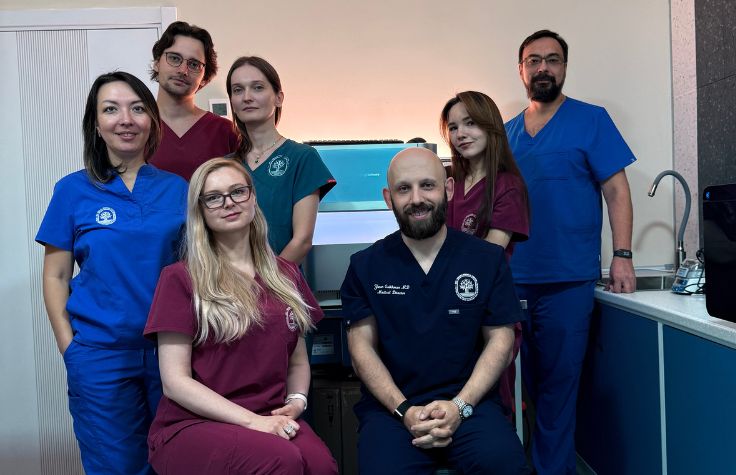
November 13, 2024
Over the last decade, cancer biologists and clinicians have made remarkable progress in the treatment of many types of cancers that were previously difficult to treat, such as targeted therapies for blood cancers and immunotherapies for skin cancer. However, despite these advances, there’s still no cure for osteosarcoma, a type of bone cancer that can manifest as early as childhood. About 60% to 70% of patients survive after surgery and chemotherapy, but if the tumor has metastasized, their chances of survival plummet to 20% to 30%.
Luigi Mancinelli, a postdoctoral fellow in Giuseppe Intini’s lab at the University of Pittsburgh’s School of Dental Medicine, is using next-generation transcriptomic tools to study how osteosarcomas metastasize. Their goal is to block the tumor’s ability to develop metastasis, because that’s what causes many patients to die. “You need to know what these cells have that’s giving them the ability to survive and form metastasis,” Mancinelli says.
He explains that osteosarcomas are notoriously challenging to study because the cells tend to be extremely heterogenous from patient to patient, which could, in part, explain why there are so few effective treatments for it. Instead of looking at DNA, he’s particularly interested in studying changes in gene expression at the RNA level. “We want to know how these cells can change,” he says, “and discover which genes are switching on and off and allow them to survive in the blood.”
Next-generation sequencing—using the Illumina NovaSeq X Plus in particular—has helped Mancinelli and his colleagues study the RNA profile of this cancer. Using genetic mouse models of osteosarcoma and specimens from patients, they isolated cells of interest from primary tumors and from lung metastases (the lung is one of the most common sites in the body that osteosarcomas spread to), and performed single-cell RNA and spatial transcriptomic analysis on them. Ultimately, they were able to fully characterize the cells’ transcription profile, compare primary tumor cells to the metastasized cells, and identify genes that may contribute to the development of metastasis in the lung.
Illumina Partek Flow analysis software has helped Mancinelli pull insights from the high volume of genetic information that comes out of these experiments. “I’m not a bioinformatics guy; I’m a molecular biologist,” he says. “But when I started here, my lab wanted to do a lot of single-cell analysis.” He found Partek Flow powerful in its analysis and simple and intuitive to use.
With the help of Partek Flow, Mancinelli and his colleagues identified new genes that could help drive the metastasis of osteosarcoma. One gene that caught their attention was bone morphogenetic protein 3 (BMP3), which inhibits bone and cartilage development. Although nothing in current scientific literature suggests that BMP3 plays a role in this kind of metastasis, Mancinelli finds the gene worth exploring.
Moving forward, he’s confident that next-generation sequencing, in tandem with Partek Flow, can help him and his colleagues uncover even more clues about how this aggressive cancer develops and, ultimately, help clinicians find new ways to treat it. ◆


